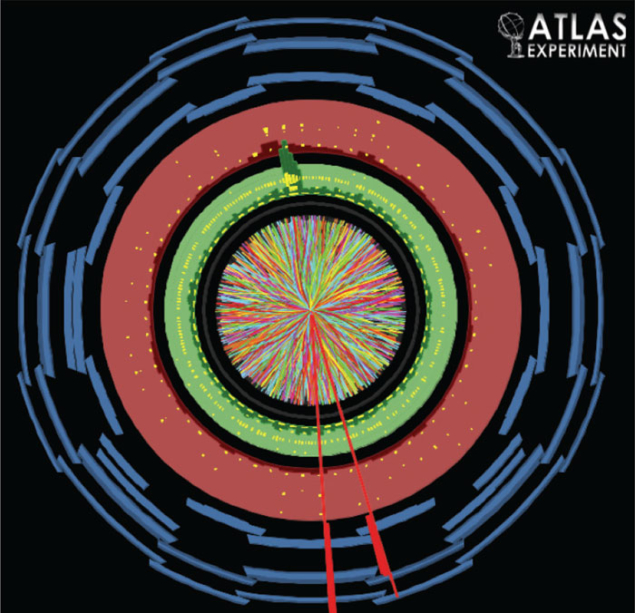Studies of heavy-ion collisions at the LHC are challenging and refining ideas on how to probe QCD – the theory of the strong interaction – at high temperature and density. From precision analyses of particle “flow” that clearly distinguish pre-collision effects from post-collision effects, to the observation of jet quenching, the ATLAS collaboration is releasing many new results. Several of these observations are surprising and unexpected, such as the occurrence of strong jet quenching with almost no jet broadening; and complete explanations are currently lacking. One new set of results, however, spectacularly confirms expectations: photons and the heavy W and Z bosons are unaffected by the hot dense QCD medium.

Direct measurements of energetic photon production released by the collaboration recently show that the number of photons produced is just as would be expected from ordinary proton–proton collisions when extrapolated to the multiple collisions within the heavy-ion interactions. This effect is truly independent of the “centrality” of the collision, the parameter that distinguishes head-on (central) collisions from grazing collisions. Similar observations have been made at much lower energies. However, by taking advantage not only of the LHC beam energy but also the capacity of the ATLAS calorimeters to make precision measurements and reject background events, this new study extends the results to energies 10 times higher for central collisions.
ATLAS has also released new measurements of Z-boson production, which show that, like photons, Zs are unaffected by the heavy-ion environment; the number produced is exactly what would be expected from “binary scaling”, i.e. scaling up to the number of nucleon collisions. The Z bosons were measured through their decays both to two muons, using the ATLAS muon spectrometer, and to electron–positron pairs, with the ATLAS calorimeters. The observation of binary scaling not only shows that the Zs are unaffected by the medium, but it reveals that the electrons, positrons and muons produced are also unaffected, as expected.
These results open up a long dreamt of possibility in this field: the study of jet-boson correlations. Because the bosons are unaffected by the hot dense medium, they can be used as a “control” to study precisely the suppression of jets. ATLAS is already making prototype measurements of this kind and high precision should be attainable in future LHC runs.
• For more information, see https://twiki.cern.ch/twiki/bin/view/AtlasPublic.







